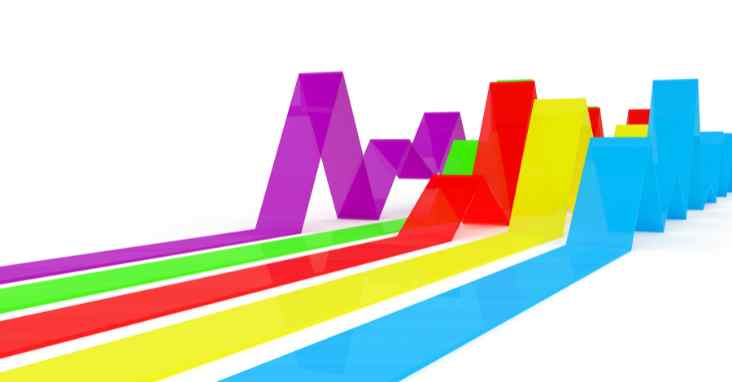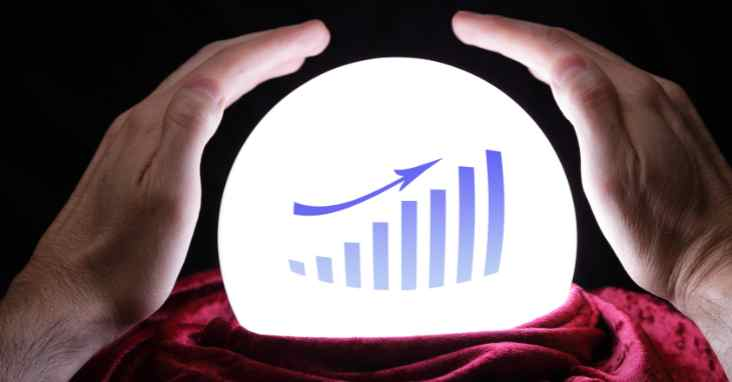What is sales forecasting? Sales forecasting is a process of predicting future sales performance based on data from past sales trends and market research. A sales forecast is a projection of future sales revenue and a prediction of which deals will move through the sales cycle.
It helps businesses to plan for the future by understanding their current performance, anticipating customer needs, and evaluating market changes.
Sales forecasting also helps businesses make better decisions about pricing, product development, marketing strategies, and more.
Benefits of Sales Forecasting
Sales forecasting offers several benefits to businesses. It helps them anticipate customer needs and market changes, develop more accurate pricing strategies, plan resources more efficiently, predict future trends in the market, and improve customer service. Sales forecasting also provides a competitive edge by allowing businesses to adjust quickly to changing markets and customer preferences. With the help of a CRM (customer relationship management), there’s very little admin overhead, and it gets your sales team in the habit of keeping track of future wins. Using this method, sales managers ask their sales reps to provide an estimate of how many sales leads they expect to close within the next month. Understand your current sales pipeline. If you want to achieve better forecasting, accuracy starts now.
Different Types of Sales Forecasting Techniques
A sales forecast uses a variety of data points to provide an accurate prediction of future revenue and sales performance. There are several different types of sales forecasting techniques. These include historical data and trend analysis, market research, and regression models from actual data. Historical forecasting and trend analysis looks at historical sales data to determine future performance, while market research uses customer surveys and interviews to understand the needs and preferences of customers. Regression models use mathematical equations to predict future performance based on the relationships between different variables.
Qualitative Forecasting
Qualitative forecasting is based on subjective opinions and judgments from experts. It can be used to make predictions about customer behavior, market trends, and industry developments. Qualitative forecasting is often combined with quantitative methods for a more accurate picture of the future.
Quantitative Forecasting
Quantitative forecasting uses statistical models to predict future sales performance. This type of forecasting is based on past data and trends, and can be applied to many different types of businesses. It helps businesses identify potential problems or opportunities that may arise in the future and make more informed decisions about pricing, product launches, marketing campaigns, and more.

The Process of Building a Sales Forecast
The process of sales forecasting typically begins with gathering and analyzing data from past sales trends and market research. The data is then used to develop forecasts for different products, services, or markets. These forecasts are then compared to actual results to identify any discrepancies and make necessary adjustments. Finally, the forecast is used to drive decisions about pricing, product development, marketing strategies, and more.
Sales forecasting is an important tool for businesses of all sizes, as it helps them understand their current performance, anticipate customer needs, and evaluate market changes. By using different types of sales forecasting techniques, businesses can make better decisions about pricing, product launches and marketing campaigns, amongst other things. This will ensure they remain competitive in a volatile market.
Determining the Forecasting Time Frame
The forecasting time frame is determined based on the business’s goals and objectives. Generally, businesses will forecast sales for either a short-term (typically five years or less) or long-term (more than five years). The time frame chosen will determine which type of forecasting technique should be used.
Establishing the Forecasting Model
The forecasting model should be based on the data available, the business’s goals and objectives, and the time frame. Different models can be used for different types of businesses, such as linear regression for retail businesses or time-series for seasonal businesses.
Estimating the Forecasting Accuracy
Estimating the forecasting accuracy is an important part of the process. Companies should use different methods to measure accuracy and make improvements as needed. This could include analyzing trends over time, testing different forecasting models, or comparing results with actual sales data.
Analyzing the Forecasted Data
After the forecasting model has been created and the accuracy estimated, the forecasted data should be analyzed. This includes assessing potential risks and opportunities in the market, evaluating customer demand for products or services, and understanding changes in customer preferences. By analyzing the forecasted data, businesses can develop strategies to maximize sales and gain a competitive edge.
Updating the Sales Forecasts
Sales forecasting should be an ongoing process, as the market and customer preferences can change quickly. Companies should regularly update their forecasts with new data and adjust their strategies accordingly. This helps ensure that businesses remain competitive in a dynamic market.
The process of sales forecasting requires careful consideration to ensure accurate forecasting. It begins by gathering and analyzing data from past sales trends and market research. Different models are used based on the time frame and data available, and accuracy should be estimated. The forecasted data should then be analyzed to identify potential risks and opportunities. Finally, the forecasting model should be regularly updated with new data. By following this process, businesses can gain a better understanding of their current performance, anticipate customer needs, and evaluate market changes.

Commonly Used Forecasting Tools
Businesses use a variety of tools and techniques to create accurate sales forecasts. Here are some of the most common sales forecasting tools used:
Spreadsheet software: Spreadsheets can be used to store and analyze data, calculate trends and correlations, and create visualizations.
Statistical analysis: Various statistical methods such as linear regression, time-series analysis, or Monte Carlo simulations can be used to create forecasts.
AI/machine learning models: Artificial intelligence and machine learning algorithms are becoming increasingly popular in sales forecasting. They can help automate the process and provide more accurate results.
Sales Forecasting software: Sales forecasting software can help automate the process and provide more accurate results. It is, by-far, the best option for the majority of businesses. By using the right combination of tools and techniques, businesses can create sales forecasts that are reliable and accurate. This helps them make informed decisions about pricing, product launches, marketing campaigns, and more.
Challenges of Obtaining an Accurate Sales Forecast
While sales forecasting can be a powerful tool for businesses and different businesses may use a different forecasting process, it also comes with some challenges. Here are a few key challenges of sales forecasting:
Data accuracy: Accurate data is essential for an accurate forecast. If there are gaps or inaccuracies in the data, it can lead to incorrect predictions and poor decision-making.
Changing markets: Markets can change quickly, and forecasts need to be updated regularly. As customer preferences evolve, businesses must adjust their sales forecasts accordingly.
Cost: Creating accurate sales forecasts requires a significant investment of time and money. Companies must take into account the cost of gathering data, creating models, and updating their forecasts.
Complexity: Sales forecasting can be a complex process, and businesses must have the right skills and resources in place. Companies should seek out external help if they lack the necessary expertise or capacity to create accurate forecasts.
By understanding these challenges and taking steps to mitigate them, businesses can ensure their sales forecasts are as accurate as possible. By doing so, they can maximize sales and gain a competitive edge.
Conclusion
Sales forecasting is an important tool for businesses, as it can help them make informed decisions and maximize their sales performance. However, the process of creating accurate forecasts is complicated and requires careful consideration. By gathering and analyzing data, utilizing the right tools, and understanding the challenges involved, businesses can create reliable sales forecasts that lead to better decision-making. With the right approach, sales forecasting can help businesses succeed in an ever-evolving market. If you’re already working with a sales forecasting tool, you’re in luck but if you need to research sales forecasting software to manage your next sales forecast visit Serchen.com
Find: The Best Sales Forecasting Software in the Serchen Marketplace












